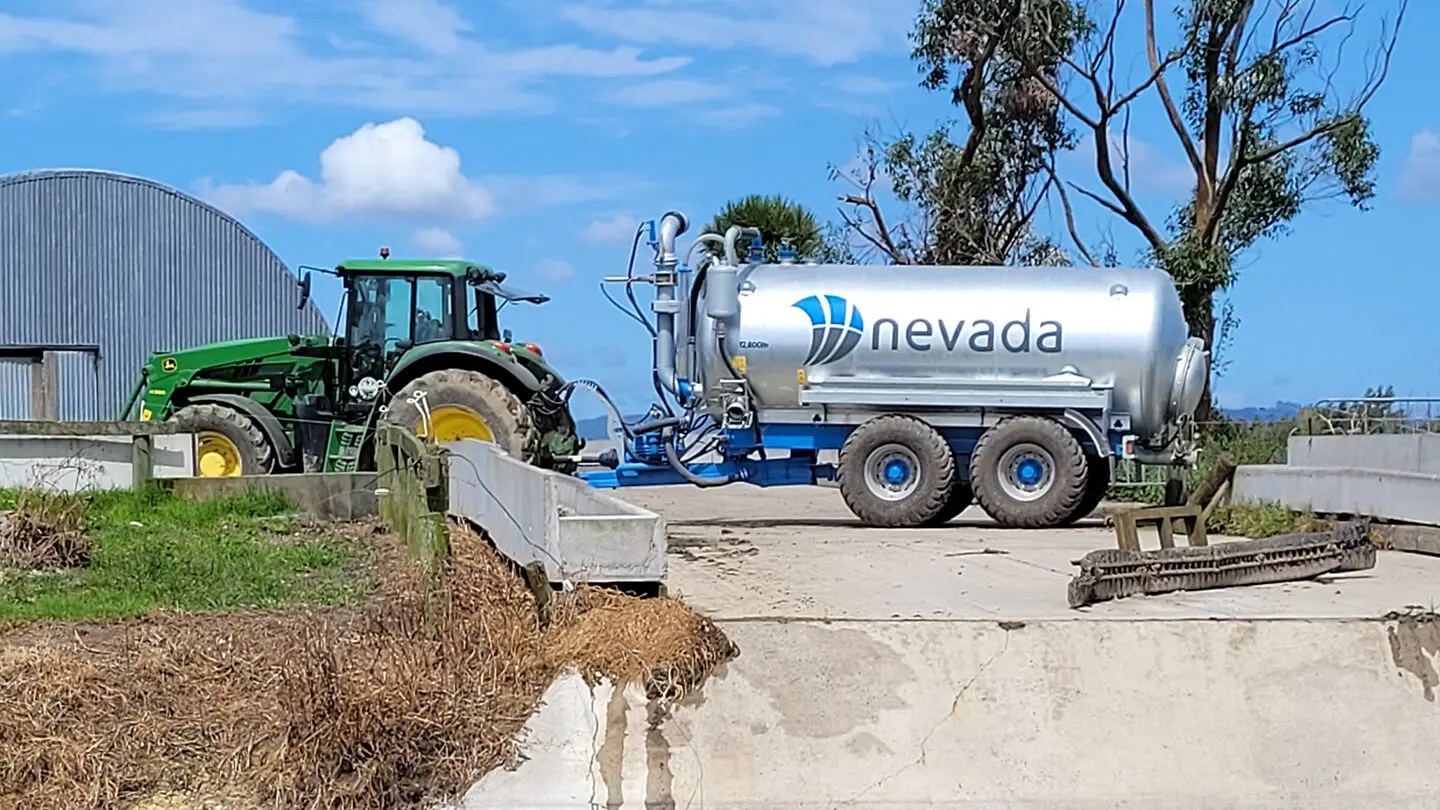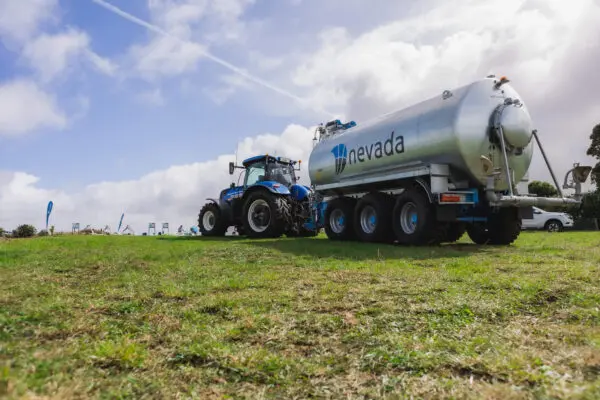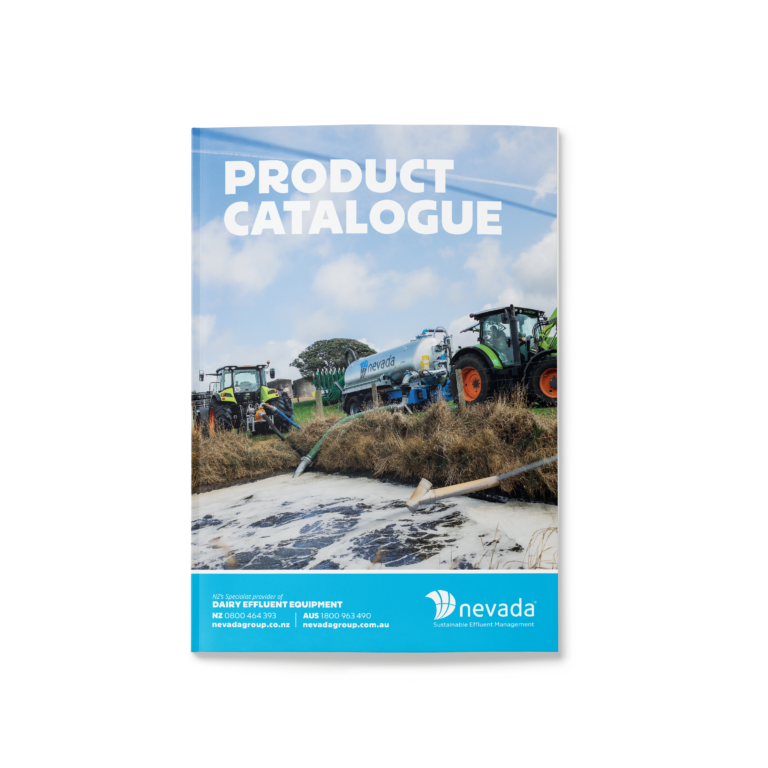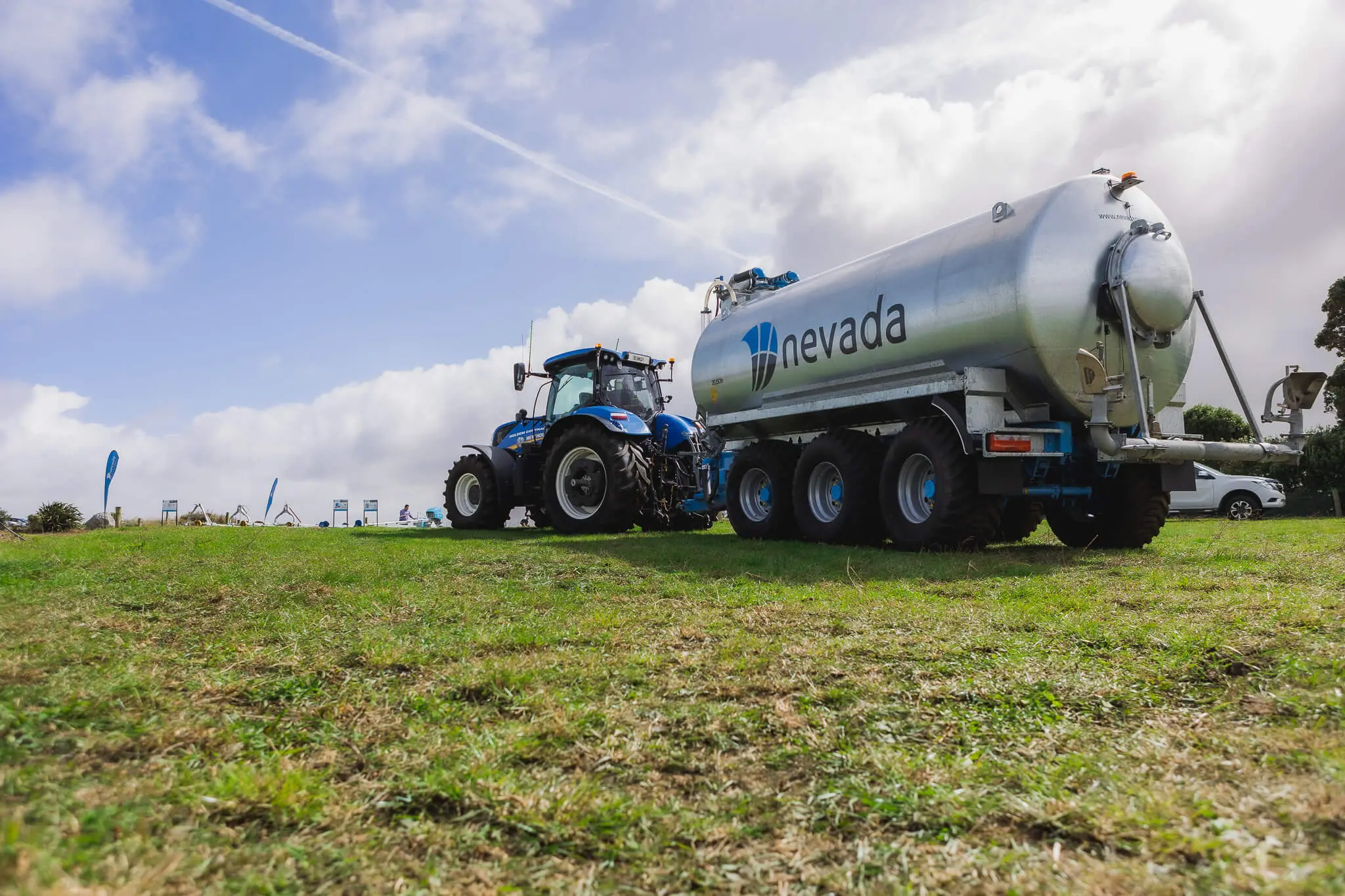- Sustainable Effluent Management
Jeanette and Neil could see the value in applying effluent to land. They could also see that discharge consents were not to be relied on in the future.
‘We wanted to make a proactive improvement to how we managed effluent. Get in early and give ourselves time to adjust. Now that Fonterra have made it a condition of supply, we’re glad we did!’
Neil Troost – Sharemilker
Impressed by the neighbour’s Nevada slurry tanker, and from his recommendation, they gave Nevada a call to work out a plan.
‘We Winter milk and collect effluent from the feed pad, so there’s a lot of nutrients we can be making use of. We wanted to make sure there was plenty of storage so we never have to worry about it.’
As a contingency, one of the oxidation ponds was extended and converted into a second effluent storage pond.

‘We’ve increased the size of our second pond 4 fold. The plan is to suck from the first smaller pond with a slurry tanker as much as possible, then use the larger second pond during times we can’t apply effluent to land.’
With more effluent to spread, Jeanette and Neil thought it would be wise to invest in their own slurry tanker to spread when and where they wanted. Jeanette’s son, Gordon was more than happy to take on the job of driving it.
‘It’s a real easy job. We just follow the cows in rotation. So far there haven’t been any times we couldn’t spread.’
One of the reasons they chose to spread with a slurry tanker was the versatility. The tanker can suck thick slurry from any of the ponds and can also be used to clean out the feed pad and troughs. There are also no limitations to spreading all over the farm – including around odd-shaped paddocks.
CASE STUDIES
Bringing you helpful advice, info, news and stories from Nevada. See how Nevada Group’s solutions have transformed dairy farms with increased efficiency and sustainability.
"*" indicates required fields

"*" indicates required fields

"*" indicates required fields

"*" indicates required fields

